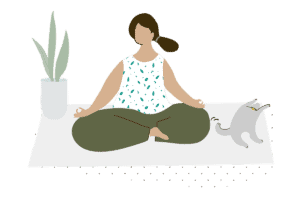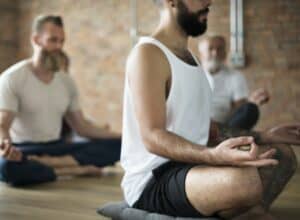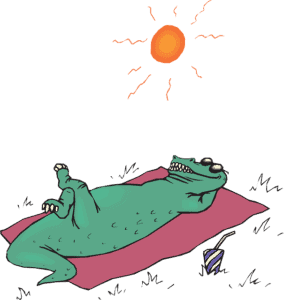Pranayama is breathe yoga vital to the practice. Many practitioners value these breathing exercises as the most important part of yoga. Translated, the word means force + extending/stretching. Breathing is something we do every day. Thus, by learning to control it, we train the foundation of everything, far beyond yoga.
If you are a new yoga practitioner, you’ve probably started with asanas. Now, it’s time to get closer to the essential breathing techniques to fill your practice with force and power. What is pranayama? This is where a simple sigh may elevate all your worries and supply you with healing energy.
Pranayama History
Being an essential part of yoga, pranayama is as old as the practice and meditation. The ancient texts of around 5000 BC contain records of all three practices: pranayama, yoga, and meditation. Such texts as Yoga Sutras that dwell on yoga’s theory and practice relish breathing techniques alongside all asana poses.
The mentioned text highlights eight limbs of yoga needed to reach the ultimate “yoga state” (focused concentration). As a result, you connect with your inner Self and get a clear perception of your mind, body, feelings, etc. Pranayama serves as an essential step on the road to your true Self. It is mentioned to clear your inner light and eliminate distractions and doubts that pollute your light and prevent the ultimate connection.
The Essence of Pranayama
 By practicing pranayama, you make every breath smooth and meaningful. You break the unconscious shallow breathing patterns and effectively fill your whole body with oxygen.
By practicing pranayama, you make every breath smooth and meaningful. You break the unconscious shallow breathing patterns and effectively fill your whole body with oxygen.
A quick note: At the time of the pandemic, pranayama offers significant preventive measures for respiratory diseases and helps to check chest pains.
Why Yoga Breathing Is Important?
To make the practice most effective from the start, it is recommended to visit a professional who would consider your needs and offer lessons. When done correctly, pranayama stimulates the parasympathetic nervous system to release stress-relief responses.
However, there are a few pranayama breathing techniques that can be practiced at home with great effectiveness. We’ll enlist all of them later after discussing the benefits of pranayama.
Pranayama Benefits
Pranayama affects our bodies in multiple ways. It boosts and engages functions and responses that normally sleep dormant. It touches both our mental and physical health. By practicing pranayama regularly, you experience the following benefits.
Physical
Regulates Blood Pressure
People suffering from hypertension, commonly known as high blood pressure, will find these calming pranayama techniques beneficial for resolving their issues. High blood pressure is a symptom that can lead to grievous conditions like a heatstroke. Proper breathing lowers blood pressure by reducing stress levels. As you concentrate on deepening your breath, you calm your nervous system that, in its turn, controls blood pressure.
Healthy Lungs
 If there is the time to strengthen your lungs, it’s during the pandemic that targets them. Deep and forceful breathing offers practical exercises for your lungs. As mentioned before, it is also a quick indicator of chest pains.
If there is the time to strengthen your lungs, it’s during the pandemic that targets them. Deep and forceful breathing offers practical exercises for your lungs. As mentioned before, it is also a quick indicator of chest pains.
A study conducted last year showed that regular pranayama practice drastically improves lung functions. Among the studied benefits are easing asthma, allergic bronchitis, and recovery from tuberculosis. The participants of this study practiced pranayama for an hour a day for six weeks.
Improves Sleep
Poor sleep quality and disturbed patterns can also be fixed by regular pranayama techniques. The improvement, once again, comes from the stress-relieving effects of pranayama.
Clinical research showed that Bhramari pranayama slows down breathing and heart rate calms your body for sleep when done right before bed. A pleasant bonus – it also decreases snoring.
Psychological Advantages
Reduced Stress Levels
As we’ve mentioned before, pranayama works wonders for our stress levels. This mental equilibrium is behind several physical effects as well.
All the studies conducted on the effects of pranayama on human stress levels shows positive results on people of all ages. Pranayama is as effective as meditation.
Enhanced Cognitive Performance
Alongside bringing calmness to our lives, pranayama was proved to enhance our brain functions. A 2013 showed significant improvement of reasoning skills, cognitive flexibility, and memory after 12 weeks of practicing pranayama. These exercises were also proved to improve reaction time, auditory memory, and motor performance when it came to fast pranayama.
Pranayama Breathing Techniques
Nadhi Sodhana
 This technique is also known as alternate nostril breathing. This is one of the balancing yoga breathing techniques that calms your nervous system and is great before going to bed. It increases the amount of oxygen you draw to saturate your blood and all organs.
This technique is also known as alternate nostril breathing. This is one of the balancing yoga breathing techniques that calms your nervous system and is great before going to bed. It increases the amount of oxygen you draw to saturate your blood and all organs.
Practicing technique:
- Seat or lie down in a comfortable pose
- Breathe out all the air from your lungs
- Block your right nostril with your right thumb (left if it’s your dominant hand)
- Inhale through your left nostril into your belly
- Close your left nostril with the ring finger and hold the breath for a bit
- Release your thumb and exhale
- Repeat on the opposite nostril
- Continue for up to ten cycles (four is enough for beginners)
Kapalabhati Pranayama
This is cleansing pranayama that will clear your body from the touchable build-up like mucus, relieve congestion, and bloating. While the previous technique was calming, this is an active, fast, and heating practice.
Practicing technique:
- St comfortably with a straight spine
- Exhale completely
- Inhale through both nostrils
- Sharply exhale through your nose while pulling your navel towards the spine
- Repeat for 30 exhalations
Dirga Pranayama
 Dirga is also known as Three-Part Breath. This technique focuses on breathing into various parts of the abdomen. This is a beginner-friendly practice that quickly prepares you for other more advanced techniques.
Dirga is also known as Three-Part Breath. This technique focuses on breathing into various parts of the abdomen. This is a beginner-friendly practice that quickly prepares you for other more advanced techniques.
Practicing technique:
- Lay on your back
- Take a deep breath and direct it to your belly (it should expand)
- When it’s full, draw in more air to the ribcage
- Draw even more into the chest
- Exhale slowly moving from chest to belly
- Repeat the cycle 15 times
These are the three basic pranayama techniques that can be practiced by beginners easily. They will become your first step to the more advanced and complex yoga breathing exercises. Repeat them daily for better results! And combine with balance exercises.